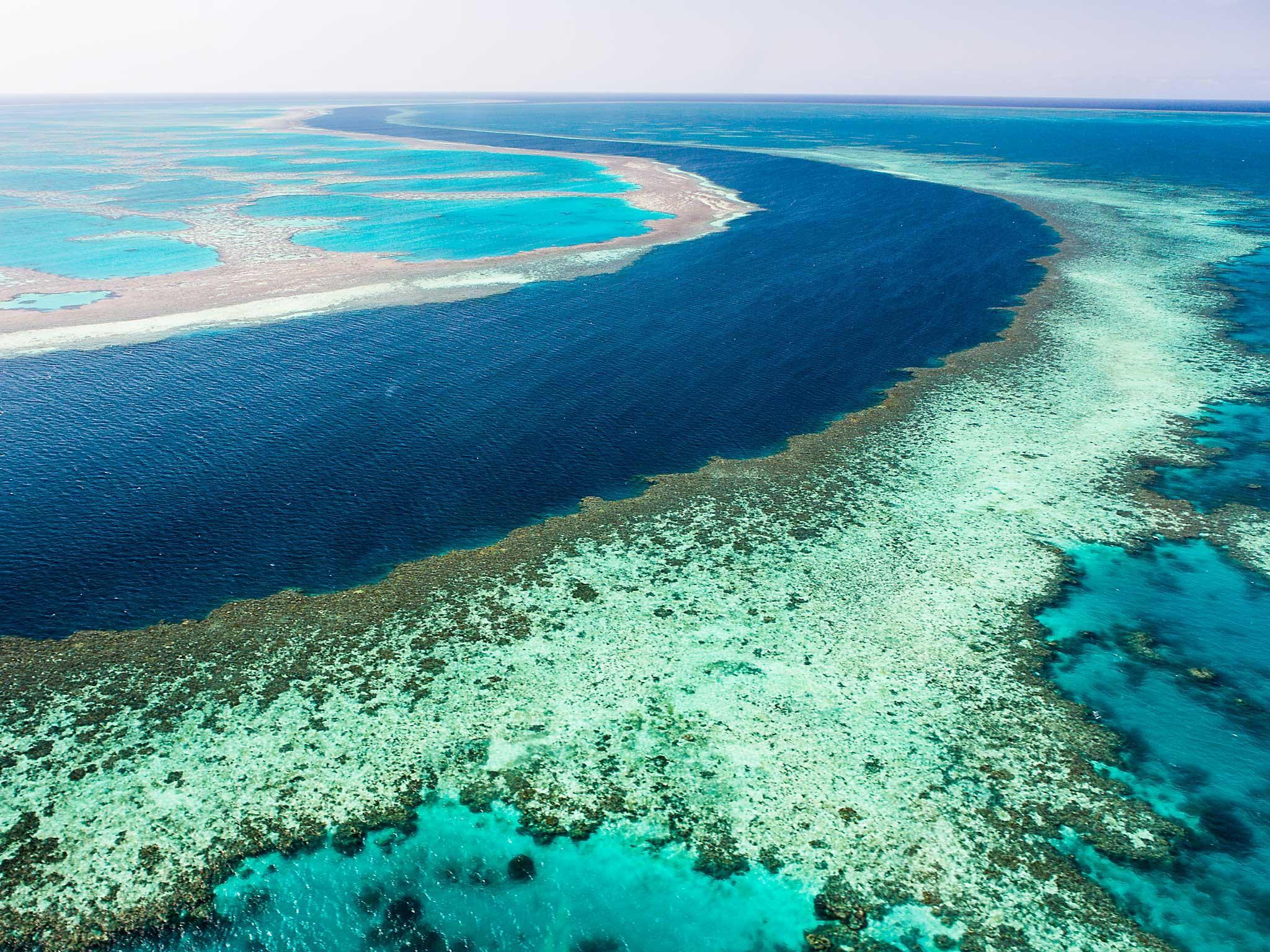Great Barrier Reef: Giant blue sinkhole discovered by marine biologists
Scientists explored the phenomenon 200km off the coast of Australia’s Daydream Island

Your support helps us to tell the story
From reproductive rights to climate change to Big Tech, The Independent is on the ground when the story is developing. Whether it's investigating the financials of Elon Musk's pro-Trump PAC or producing our latest documentary, 'The A Word', which shines a light on the American women fighting for reproductive rights, we know how important it is to parse out the facts from the messaging.
At such a critical moment in US history, we need reporters on the ground. Your donation allows us to keep sending journalists to speak to both sides of the story.
The Independent is trusted by Americans across the entire political spectrum. And unlike many other quality news outlets, we choose not to lock Americans out of our reporting and analysis with paywalls. We believe quality journalism should be available to everyone, paid for by those who can afford it.
Your support makes all the difference.A team of divers recently explored a Blue Hole in the Great Barrier Reef. Lying over 200km from Daydream Island off Australia’s north-east coast, the hole had been described by geologists but never explored by scientists until now.
A Blue Hole is a large marine cavern or sinkhole, open to the surface and with a bank or island composed of limestone or coral reef. They formed during past ice ages, when sea levels were much lower. Over time, rain and chemical weathering dissolved the limestone ground, forming sinkholes with large caverns beneath.
These caverns’ roofs would collapse, leaving deep holes which were filled with water when the ice eventually melted. The Great Barrier Reef has one such hole.
Johnny Gaskell, a marine biologist from the Whitsundays, shared a picture of it on Instagram with the caption: “This Blue Hole has previously been described by geologists who suggested it could be even older than the famous Great Blue Hole, in Belize.
“Its location is in one of the least explored parts Great Barrier Reef, over 200km from Daydream Island.
“To get there we had to travel overnight for 10 hours and time the tides perfectly...Was well worth it!
"Inside the walls was similar to the site we explored a few weeks back, but this hole was deeper and almost perfectly circular. We dived down to just over 20m yesterday, before hitting bare sediment, that slowly sloped towards the centre.
“It was great to see big healthy coral colonies.”
Gaskell also captured the experience on film, with a video of the beautiful corals found in the hole.
The discovery of healthy coral is particularly heartening as the Great Barrier Reef has undergone two bleaching events in the last two years, where warmer sea temperatures have caused the corals to lose their colourful algae. If the temperature drops again the corals can survive, but severely bleached corals can die.
Belize's Blue Hole, at 300m wide and 125m deep, is believed to be the largest Blue Hole in the world, while the deepest is the Dragon Hole in the South China Sea, at 301m.
Join our commenting forum
Join thought-provoking conversations, follow other Independent readers and see their replies
Comments